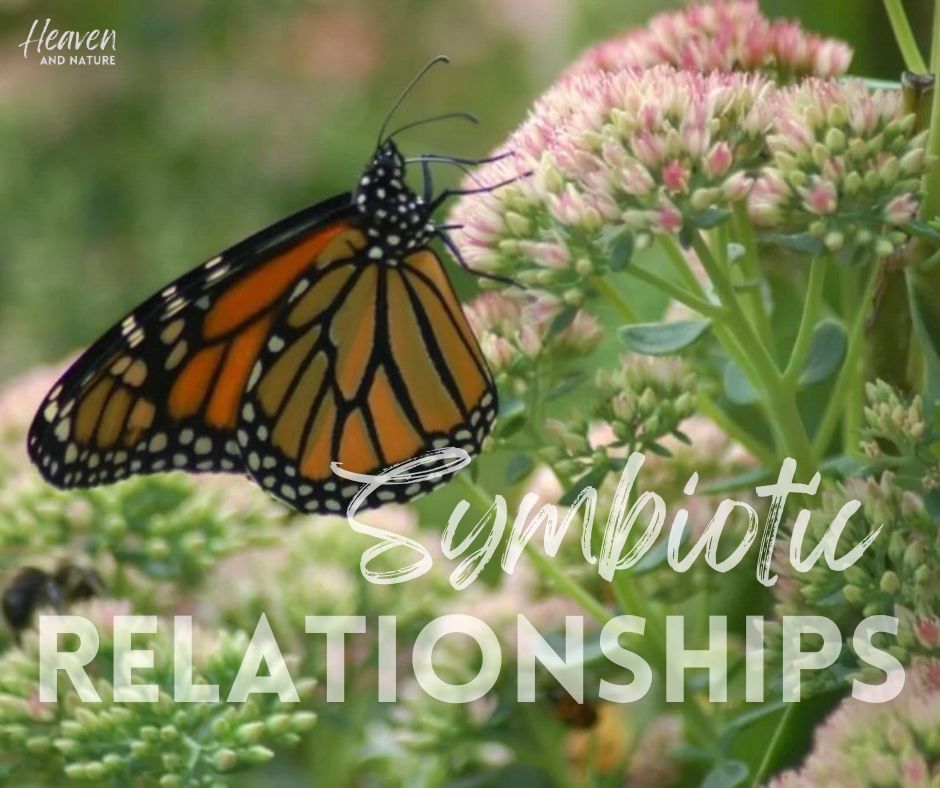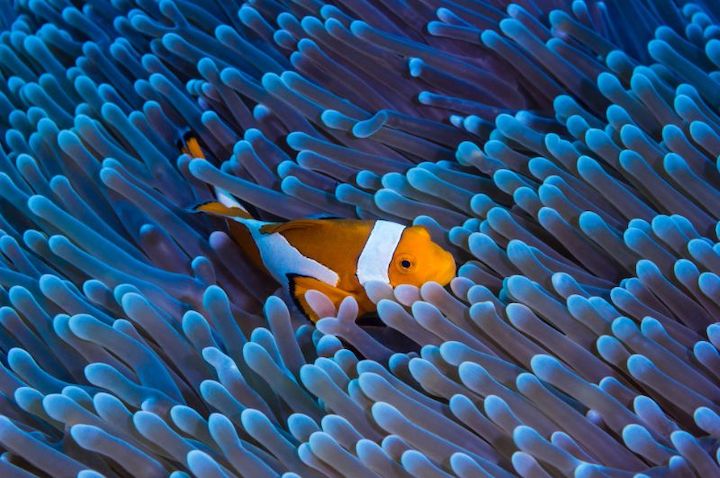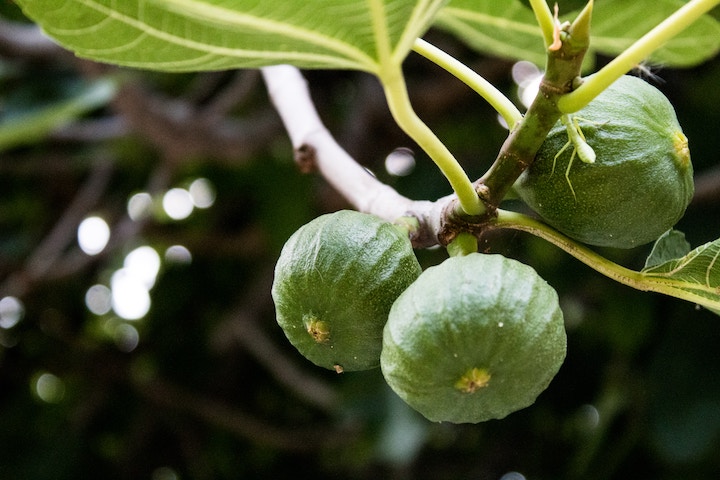Symbiotic relationships—when two widely different natural species depend on each other for survival—are fascinating!

Some relationships don’t benefit both parties and some harm one party—in the case of parasites, for example.
We’re going to look here at “mutually symbiotic” relationships in nature—where both parties benefit.
Clownfish and Anemones
Finding Nemo brought the clownfish/anemone relationship into popular culture. Every child in America (at least in my kids’ generation) knows what a clownfish is because of Nemo.

While anemones have toxic chemicals in their tentacles for gathering food and protection, clownfish are immune to these toxins. Scientists aren’t sure how, but think it has something to do with mucus on their skin.
Clownfish help clean and fertilize their host anemone, drive off potential predators and maybe provide “leftovers” for it. In return, the anemone provides shelter and protection from the clownfish’s predators.
Honeybees and Flowers
Another well-known example of a symbiotic relationship in nature is honeybees and flowers.

Honeybees depend on the nectar and pollen of flowers for their food. Because they live in huge colonies with thousands of members, they need a lot of food. They get it from all kinds of different flowering plants.
The plants, in turn, rely on honeybees (and other pollinators) for reproduction. Pollen from the male plants must get to the female plants. Honeybees accomplish this inadvertently as they fly from one flower to another collecting their food.
Monarch Butterflies and Milkweed
This is a symbiotic relationship I remember learning about as a child in school—monarchs and milkweed.

Milkweed is the only host plant for the caterpillars of monarch butterflies. But the milkweed leaves don’t just provide food for these young ones. The leaves have a toxin in them that makes the caterpillars toxic to any potential predators—and yet it’s not fatal to the caterpillar.
How cool is that?
Adult monarchs benefit milkweed by pollinating the flowers, similar to the honeybees we just talked about.
Fig Wasps and Fig Trees
Here’s one I hadn’t heard about before—fig wasps and fig trees depend on each other for survival.

The fig tree’s flowers are literally inside hollow little balls, so most pollinators can’t find them. But the fig wasp knows how to look for these flowers, gets inside one of these balls and lays her eggs.
These fig wasps live a rather tragic, short life. But that life depends on the fig tree, while the fig tree depends on these wasps in order to produce their figs.
Yucca Moth and Yucca Plant
Yuccas are striking succulents that thrive in the American southwest and other dry areas. I’ve seen them quite often on hikes, and even in the landscaping of suburban homes, out in Colorado and Wyoming.

Yuccas are the only host plant for the tiny yucca moth…and these yucca moths are the only pollinator for the yucca plants! Isn’t that extraordinary?
Not only that, female yucca moths will usually only lay their eggs on a yucca plant where another female moth hasn’t been. This helps ensure there’s enough food for all the little guys that hatch.
What Do Symbiotic Relationships Tell Us About Nature?
For those of us who see life through a biblical worldview, these relationships are one more reason to be in awe of God’s creative genius and power. They shout design! Planning. Engineering.
Could unplanned, random, step-by-step mutations eventually produce two highly-specialized species that happen to depend on each other for survival?
What about many highly-specialized species that depend on each other for survival?
How God Created People to be in “Symbiotic” Relationships
These mutually-beneficial relationships in nature are a vivid picture of the way God created people to be interdependent on one other.
Families
First, we have the design of the family. Fathers, mothers and children aren’t meant to do the same thing, to be the same thing. Healthy family relationships are “mutually symbiotic” in the various seasons of life in different ways.

Churches and The Church
The Church is another great example of mutually symbiotic relationships (at least the Church as designed and overseen by the Holy Spirit!).
1 Corinthians 12 is all about the various roles and responsibilities of people in His Church:
“There are various kinds of gifts, but the same Spirit. There are various kinds of service and the same Lord. There are various kinds of workings, but the same God…” (verses 4-6)
“But the one and the same Spirit produces all of these, distributing to each one separately as he desires.” (verse 11)
Romans 12 gets into this in a lot of detail too, such as:
“Even as we have many members in one body, and all the members don’t have the same function, so we, who are many, are one body in Christ, and individually members of one another, having gifts differing according to the grace that was given to us…” (verses 4-6)
And then it goes on to list what many of these gifts are. A healthy church is one where its members are mutually benefitting each other for the glory of God’s kingdom.

Organizations
We can even look at a well-run organization as an example of this. Everyone has their own role—their job description and duties. When they each do their own job well, the entire structure flourishes.
God has designed these mutually symbiotic relationships into the fabric of His creation! So cool.
Here’s more…
- 7 Wild Edible Berries of the Midwest
- What Does it Mean to Have a Biblical Worldview?
- Lessons Learned Beyond Running
- How God Speaks through Signs in the Heavens - June 14, 2024
- 20 Meaningful Bible Verses about Nature - March 18, 2024
- Build Christian Community through Outdoor Adventure - February 17, 2024
